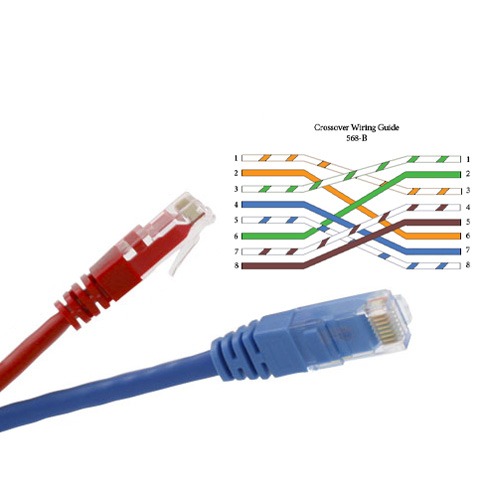
Crossover patch leads are used for direct network connections, such as linking computer to computer or computer to router. The patch lead for crossover wiring will often have the word “crossover” on its shield. The name Crossover tells users that the send and receive pairs are crossed, or flipped, from one end to the other. The two wiring schemes for RJ-45 connections, T-568A and T-568B, are both used in a crossover patch lead. 568A will be on one end of the cable and 568B will be on the opposite end. In comparison, a cable with a straight-through wiring scheme will have either a T-568B or T-568A on each end. A patch lead is typically a shorter segment of Ethernet cable used to connect similar devices.
RJ45 Crossover Patch Cords for Cat5e Performance
The TIA/EIA-568-A and 568B RJ45 wiring standards provide the specifications for RJ45 crossover patch cord performance. For example, a Cat5e patch lead meets Category 5e standards. Leads are tested by manufacturers to ensure EIA/TIA category compliance. RJ45 patch leads come in a range of lengths and colours. Crossover cabling can be differentiated from straight-through leads by colour variations. Crossover patch leads for direct connections are available for Cat5e, 6 and 6a performance with shielded and unshielded construction.
Ethernet Crossover Patch Cable
A crossover Ethernet patch cable that includes 4-pair of UTP conductors will come in a specific length and can be pre-terminated at each end with RJ45 connectors. When all four conductor pairs are crossed, a lead is considered to be fully crossed-over for optimal data rates. A crossover cable can be used to connect computers on an LAN network. Using the crossover Ethernet patch cable, a hub-to-hub or PC-to-PC connection is made.
